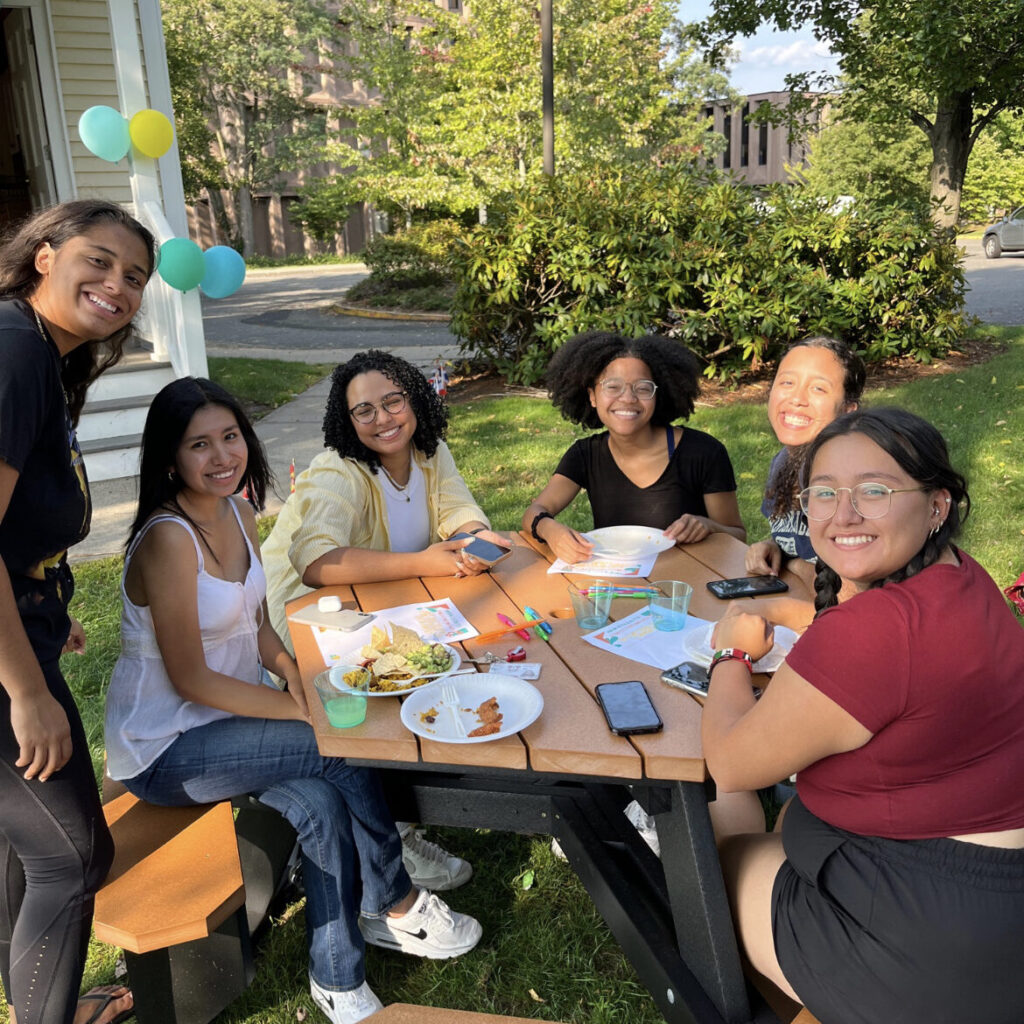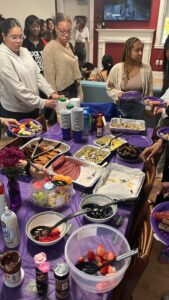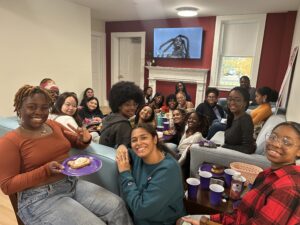
I have attended predominantly white institutions for the past 9 years. Attending these spaces has given me unparalleled access to the experience of being the “other”. Feeling isolated, unseen, and unheard had been the vast majority of my experience in PWIs before I found community in others like me. These people uplifted me and encouraged me to make a name for myself. These strong, intelligent and beautiful people of color in those spaces helped me not just navigate them but dominate them.
Similarly, when I first came to Wesleyan in 2020 during COVID, I was isolated in my cinder block single dorm, feeling out of place and alone. Two close friends invited me to hang out at the Womxn of Color House (WoCoHo), which became a safe haven. There I found a sense of belonging in the company of other womxn of color who had been at Wesleyan longer than I had. In WoCoHo, a resident informed me of the Womxn of Color Collective and invited me to their first general meeting of the year. While it was on Zoom, I thoroughly enjoyed being around other womxn of color and building community.
Two years later, I became the Womxn of Color House Manager and joined the board for the collective as a class liaison. On the board, I listened as we drafted idealistic plans for the collective’s year. We planned and successfully executed the annual Womxn of Color Brunch. Living off the high of that event, I looked forward to board meetings, as I knew we could influence our campus community. Disappointment replaced my excitement as our plans gradually stalled, and eventually we even stopped meeting as a board. I felt uncomfortable asking our senior leaders for their commitment, as I assumed the stresses of senior year thwarted their investment in the collective’s efforts. I redirected my energy into creating spaces for Womxn of Color within the house itself.

In the spring of 2023, my fellow board member (and now co-president) Keely and I started drafting up intentional language about the collective’s goals, values and even set distinct roles for what board membership would mean. Together, we transformed what the collective’s framework would look like so that we could bring the collective back with full force for the following academic year. Keely used her Canva skills to create new logos for us, and I took to our Instagram page, archiving and wiping anything that did not align with our new direction. We opened board applications for the next year and waited to see who would apply.
In the fall of 2023, together, we planned and executed new initiatives and reimagined old ones; we hosted our first general meeting, launched our WOCOCuties initiative and brought back the Brunch bigger and better!



The biggest thing that we were tasked with but have executed successfully is the revival of the Student of Color Formal, a Wesleyan student of color community tradition that uplifts and celebrates our diversity and experiences. The SOC Formal hadn’t happened since 2019. This year, we knew it was essential for us to bring the event back, but we also wanted to collaborate with all the SOC centered organizations on campus to put the event together! We organized committee meetings and divided tasks every Sunday to make the formal happen. The event itself was spectacular to witness as over 150+ SOC flooded Russell House and celebrated themselves.
Spaces like WOCOCO and the SOC Formal are crucial to giving underclassmen a space to feel seen on campus. These spaces create a sense of visibility and validation for them and help secure a long sustaining community of care as we all navigate Wesleyan together. As a senior, I want to leave behind a legacy of intentionality behind the way we cultivate connection amongst students of color so that future underclassmen will always know that they belong here and people are eager to interact with and care for them.
